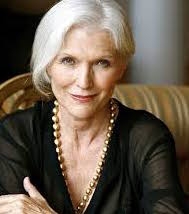Articles and News
Not Just A Gift Of Love: Independent Millennials And Older Women Are Ripe To Buy Jewelry | June 22, 2016 (0 comments)

Merrick, NY—Luxury jewelry has been marketed as a gift of love from a man to a woman for so long that both jewelers and consumers can have a hard time seeing past that message. But positioning it as a luxury fashion accessory can help jewelers overcome some of the worst challenges currently facing the industry.
Even two decades ago, women were buying the majority in certain categories of jewelry, most notably gold, silver, and pearls. But today, luxury handbags and shoes have made tremendous inroads into the female psyche, and a lot of their money is going to these categories, where price tags begin around $1,000 for shoes and can top $10,000 for some handbags—all money that could be spent on jewelry with the right messaging.
In conjunction with the 12th Annual Global Summit On Marketing To Women, conference organizers offered some powerful statistics about women’s economics. In the United States alone, women control $7 trillion of U.S. spending, and account for 85% of overall consumer spending, and dominate every category from automobiles to real estate to financial services and luxury goods. For example, women account for:
- 92% of vacations
- 91% of new homes
- 89% of bank accounts opened
- 65% of new cars bought
- 58% of total online spending
(Source: Greenfield Online for Arnold’s Women’s Insight Team)
Among 1,000 Millennial women surveyed, 96% list “being independent” as their single most important life goal, and 87% define success as being able to shape their own future. Only 50% say getting married is a priority, and only 68% say becoming a mom is on their priority list. They’re also all about balance: just 43% ascribe much importance to getting rich. (Source: Levi’s survey of 1,000 Millennials, 2010).
But luxury jewelers also want to target older women, not just Millennials. Millennials as a group still are several years away from hitting their peak earning years when they will dominate the market for luxury goods. But as women age, their representation in the consumer market rises—54% of adults over 50 are women. For the elderly (85+), that figure rises to 57%. Author Marti Barletta, who wrote Marketing To Women, says it’s a trend that has tremendous impact on the distribution of wealth in the United States. Women’s life expectancies remain greater than men’s—and the household savings pass to the surviving wife.
Women are outranking men when it comes to education, which translates to higher income potential throughout life. The U.S. Department of Education estimated in 2013 that women earned 61.6% of all associate’s degrees, 56.7% of all bachelor’s degrees, 59.9% of all master’s degrees, and 51.6% of all doctorate degrees. Overall, 140 women graduated in 2013 with a college degree at some level for every 100 men who did so.
Women have earned the majority of bachelor’s degrees for every college class since 1982 and for all degrees, women have earned 9.7 million more than men. (Source: American Enterprise Institute, Carpe Diem, Mark J. Perry, 2013)
This definitely plays out in their careers:
- 65% of business owners are women, and the New York Times reports the number of women-owned firms increased by 54% between 1997 and 2012, a rate 1.5 times the national average.
- 66% of employed adults are women. (Source: National Entrepreneurial Attitudes Study, Linkage Research, 2013)
- The average American woman is expected to surpass the average American male in earnings by 2028. (Source: Nielson, 2009)
- In the Penn Mutual 2nd Annual Worth Survey for Women, 71% of respondents characterized themselves as independent, and they are more likely to be on track with their goals of paying off debt, building up savings, and guaranteeing they will maintain or enhance their lifestyle during retirement. They’re also significantly more likely than those who do not view themselves as independent to say they are on or ahead of target for being able to save for big purchases like travel and home remodeling.
Women process information and make purchasing decisions differently than men, and they’re also more likely to share their experiences. In one survey, 91% of women said that advertisers don’t understand them, and another study of 2,000 women in Canada and the United States showed that online has surpassed traditional forms of word-of-mouth as their preferred method for getting the word out about products and services:
- 58% of women (18+) share both good and bad experiences online
- 36% share to help others make smart purchases
- 27% are asked to share
- 15% share their expertise
- Only 28% of women decide what products or services to buy without looking for some kind of help. (Source: Harbinger Women and Word of Mouth Study, October 2010)
- Half of all women surveyed—and higher for moms—visit social media sites multiple times a day.
- Men are more likely to buy for status; women are empathetic and buy for a sense of belonging and being understood.
Top image: hercanvas.com







